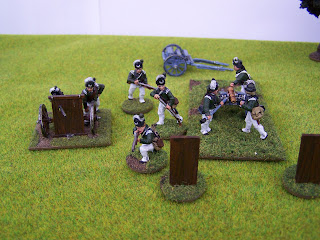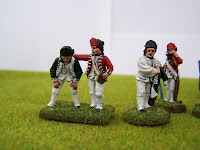
The 10th Foot was raised in June 1685 as the Earl of Bath’s Regiment. It was renamed the 10th in 1751 when all regiment were given numbers rather than the name of the colonel. In July 1782 it was given the name North Lincolnshire Regiment and linked with that county.
The regiment arrived in North America in August 1767, where they garrisoned the Great Lakes forts until October 1774 when they were shipped to Boston. The flank companies of the 10th fought at Lexington-Concord and Bunker Hill in 1775. The regiment as a whole fought at Fort Washington and Long Island in 1776, Brandywine Creek and Fort Mifflin in 1777, Monmouth Courthouse in 1778. The 10th Foot was amalgamated into other regiments but the officers and NCOs were shipped back home to raise the regiment again in September 1778.
The commander of this regiment was a Lieutenant Colonel Francis Smith. He led the first column at the battle of Lexington-Concord and was wounded in the thigh for his troubles. Then promoted to Brigadier-General he made quit a blunder by not passing on information about the rebels digging of the Dorchester Heights to his superiors. This caused the British position in Boston to be unworkable and they later evacuated to Halifax. He went on to command a brigade in the battle of Long Island and another in the battle of Rhode Island. In 1779 he was promoted to Major-General.
Though I have been painting British AWI troops for almost 2 years this is the first regiment I have painted and completed in full. I decided to start with this regiment as I’m hoping to complete the 2nd brigade, which also includes the 5th, 27th, 40th, 55th for the Philadelphia campaign in 1777. At a rate of one regiment every two months it could take a while.




Perry Miniatures, Painted October/November 2010 30 figs.
 Like the Queens Rangers artillery these were found half painted in an old bits box from a few years back, I decided to painted them up as generic light infantry skirmishing. I based them the same as I have done with the Hessian Jaegers, on 2010 pennies. I have no idea why I based them all specifically on 2010 pennies if I'm honest.
Like the Queens Rangers artillery these were found half painted in an old bits box from a few years back, I decided to painted them up as generic light infantry skirmishing. I based them the same as I have done with the Hessian Jaegers, on 2010 pennies. I have no idea why I based them all specifically on 2010 pennies if I'm honest.



























